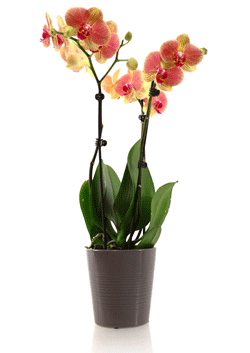
As spring approaches, orchids are at greater risk of developing a virus-like condition called mesophyll cell collapse. This condition results from the collapse of the leaves’ mesophyll cells due to exposure to overly low temperatures, and it is more likely to occur in early spring or late autumn.
Mesophyll cell collapse usually affects developing leaves, especially those in Phalaenopsis orchids. Damage may occur after just two hours of exposure to 45 degrees Fahrenheit, and it may be more severe if the temperature is lower. However, Phals with mature leaves can withstand a maximum of 8 hours of exposure to 35 degrees.
Mesophyll refers to a soft tissue that is located between the upper and lower epidermis in a leaf, and it functions to facilitate photosynthesis. Also known as green parenchyma, it consists of unspecialized thin-walled cells separated by air spaces. When orchids are exposed to temperatures that are too low, their mesophyll cells may collapse. This usually happens on nights with the lowest temperatures. Symptoms of mesophyll collapse may not appear until weeks after the condition has developed.
Once mesophyll cell collapse has occurred, the damage is irreversible. As such, you should take the necessary precautions to prevent the problem. You can reduce the risk of mesophyll collapse in your Phalaenopsis orchids by making sure that the temperatures around them are at least 50 degrees. Using heaters and providing protection against cold winds can also help prevent the condition. If one of your orchids is affected by mesophyll cell collapse, you should segregate it from other plants.
Check out our orchid care section to learn more about orchid diseases.


Copyright Just Add Ice® Orchids 2023